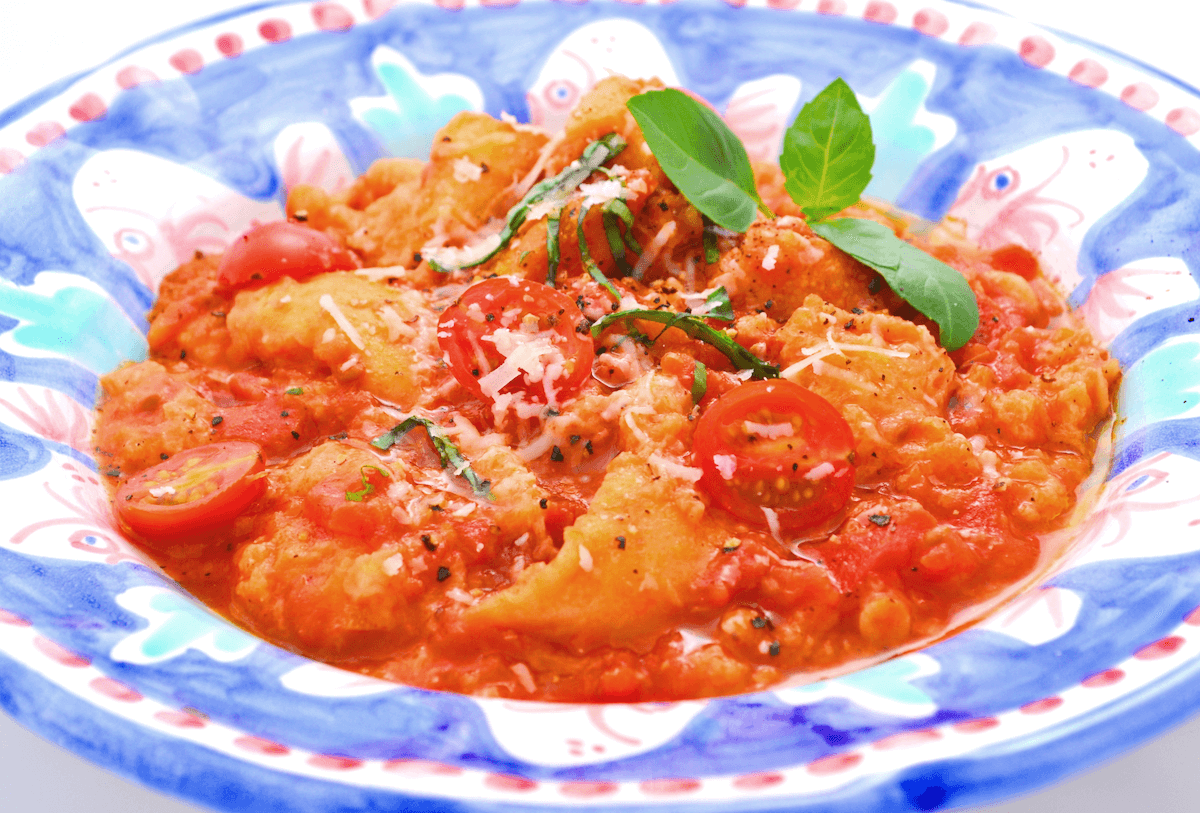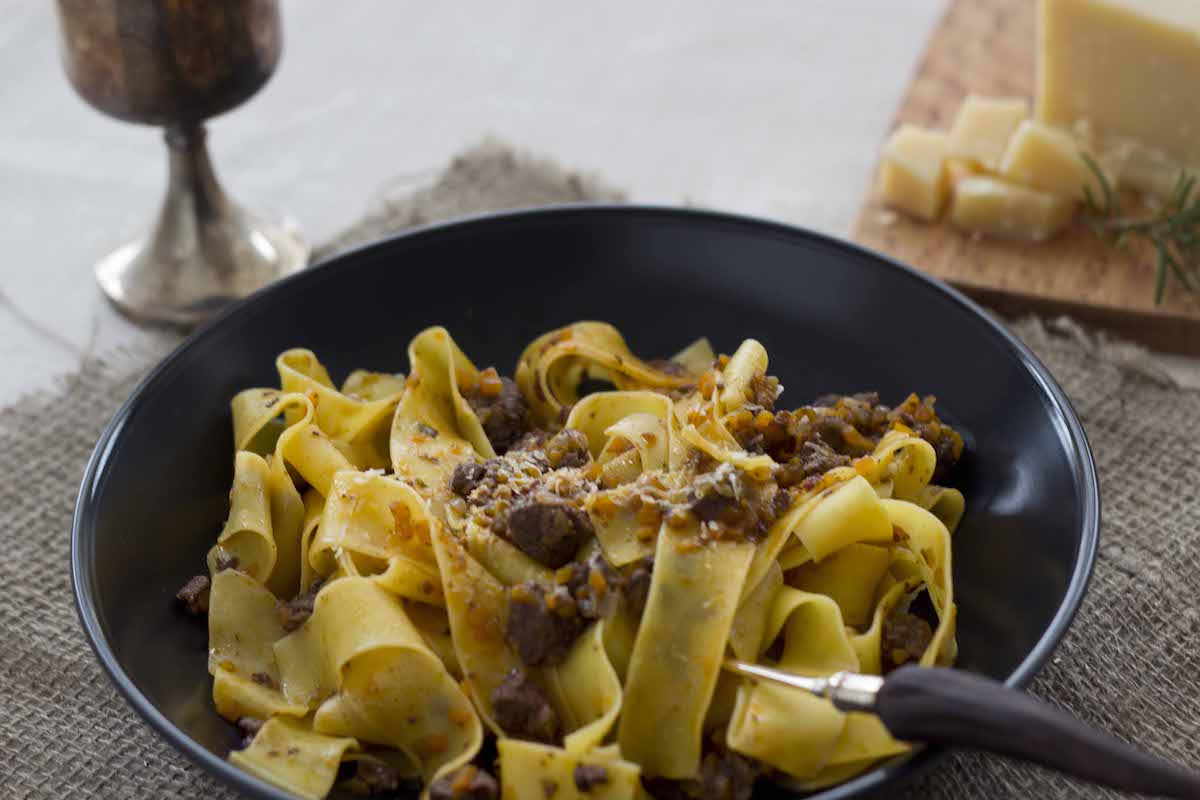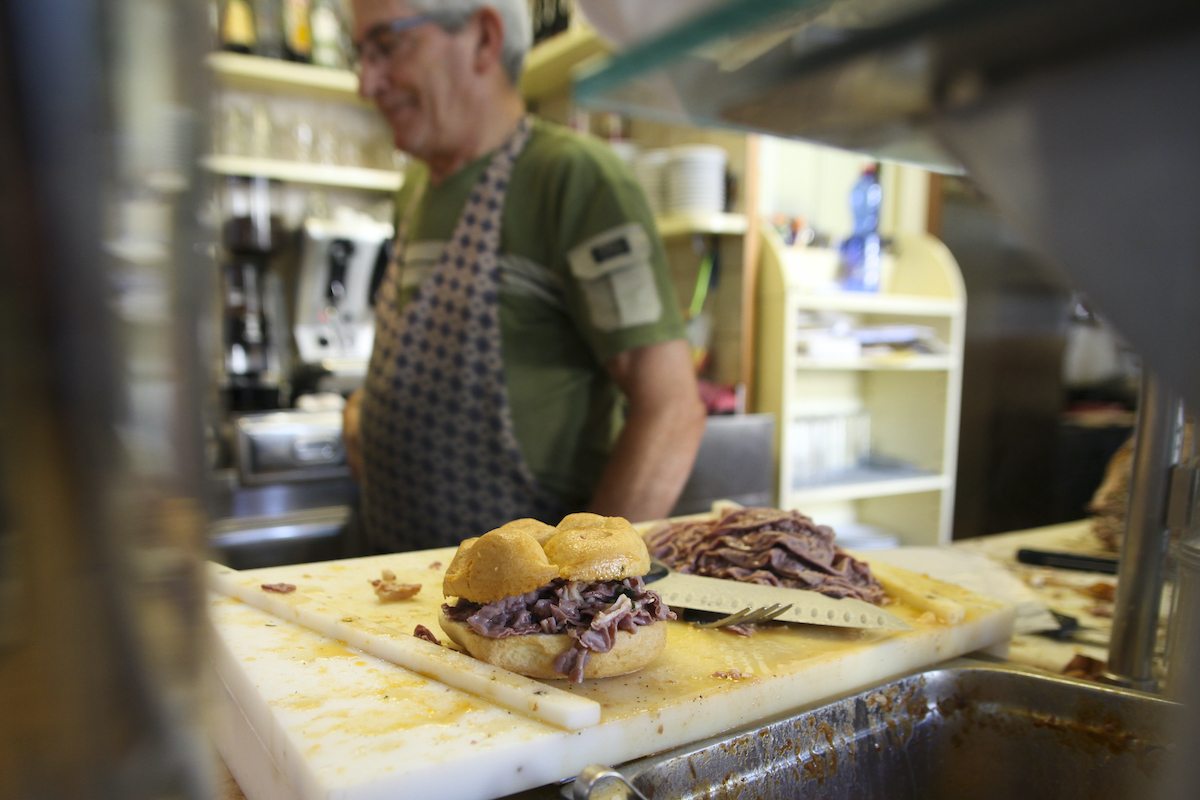So you’re headed to Florence? We imagine your mouth is already watering just thinking about the famous bistecca alla fiorentina!
Of course, the steak has reached world fame for its excellence. But while a delicious luxury, this dish is actually not the ideal representation of Florentine cuisine.

In fact, while the Medici family and other nobles may have enjoyed these juicy steaks, the majority of the Florentine locals were enjoying a much more humble cuisine. Many locals throughout history couldn’t afford much, but with what they could get their hands on they created delicious simple dishes still loved today.
The culinary divide is still visible in the restaurants of Florence. While tourists love to head straight for a bistecca fiorentina, you’ll notice locals aren’t digging into it that often. So why not join them and try out a true taste of Firenze?
Experience an authentic Florence with these typical Tuscan dishes that will make you feel like a true local.
6 Classic Tuscan Dishes
Ribollita
Warm up with hearty ribollita, a soup linked to Florence’s peasant traditions. You’ll find this on the menu mainly in fall and winter. One of the primary ingredients is kale, which real Florentines will only enjoy when in season.
More of a stew, ribollita (literally “re-boiled” in Italian) came about as a way to not waste food that had gone stale, such as vegetable bits and old bread. The leftover scraps would be mixed in and reboiled to create a satisfying and tasty meal.
Another key ingredient: Tuscan bread, which is always made without salt. The bread bits are then mixed together with a broth and local vegetables. These include white beans, carrots, potatoes, and any seasonal greens. The trick to this soup is long slow boils to let the bread soak it all up.
Where to try it out? Trattoria Cibrèo, found in the Santa Croce neighborhood, is the best place to go for a ribollita in the center! And if you are visiting out of season, you’ll still find their menu filled with typical Florentine dishes to enjoy.

Pappa Al Pomodoro
This is one of the most delicious typical Tuscan dishes, made with such simple ingredients and based yet again on the unique saltless Tuscan bread. To make this dish right, you want to wait for the bread to go rock hard stale. Then it gets soaked up in the broth, and slow-cooked with tomatoes to create a chunky tomato soup.
One last touch is needed to complete this Florentine comfort food: a drizzle of excellent Tuscan olive oil.
If you want to get a taste of this easy-going dish, in a no-frills, genuine Tuscan trattoria, you should stop by Trattoria I 2 G (Via Bernardo Cennini, 6/red). It’s a small restaurant adored for its home cooking and warm atmosphere.

Wild Boar Ragu with Fresh Pasta
Cinghiale, or wild boar, are found throughout the rolling hills and forests of Tuscany. Being so plentiful, they became a staple in Florentine cuisine, and a tasty addition to complete a steaming plate of Florentine pasta.
Which fresh pasta you may be served differs from one town to another. While most restaurants will probably offer you pappardelle or tagliatelle, both wider flat noodles; you can sometimes grab a real treat: pici!
Pici are a local tradition, coming from the area of Siena. They are spaghetti-style pasta but much thicker. When cooked it becomes chewy and soaks up the ragu for a perfect textured bite. They are rare in Florence, but, sometimes you get really lucky and find a plate—for example at Ristorante Boccanegra, a must on your trip to the city!
At Boccanegra you can try both these styles of Tuscan pasta topped with wild boar ragu in an elegant yet welcoming atmosphere. To make the experience even better, Boccanegra has a great wine list and enthusiastic staff ready to help you find the perfect pairing.

Lampredotto Sandwich
Think your appetite is up for an adventure? Try out local favorite lampredotto, an offal sandwich that’s been a go-to lunch in Florence for centuries.
Lampredotto is made from the lean part of the bovine stomach, usually boiled and seasoned with herbs and sauces. Rather than a proper dish, this is typical street food, stuck between two pieces of flatbread, wrapped in paper, and enjoyed as you walk to your next destination.
The lampredotto sandwich goes beyond being one of the most typical Tuscan dishes. It’s truly a Florentine specialty—you won’t find it anywhere else!
If you want to enjoy lampredotto in true Florentine fashion—fresh & ready to eat from a street kiosk—then you’ve got to stop by Tripperia Pollini, a family-run establishment in the form of a staple food truck. You’ll find these lampredotto chefs in Via de Macci near the Sant’Ambrogio mercato.

Florentine Tripe
Another one for you adventurous foodies, tripe became a typical Florentine dish as in the past families would never want to waste any food they could have. Using offal is a tradition not only in Florence, but also Rome, where it is called quinto quarto (“the fifth quarter”).
Though once these dishes were prepared out of necessity, today they are considered real delicacies. Florentine tripe is cooked with simple ingredients and offers a delicious strong taste. You’ll probably see it served with tomato sauce, onions, and just a little salt and pepper.
Tripe is another street food favorite in Florence, served slathered in sauce inside a crunchy bun. A great place to grab this light lunch option is Da’ Vinattieri (Via Santa Margherita, 4/6r), a literal hole in the wall tucked away around the corner from the Bargello National Museum. You might even miss it if you are not looking closely, but step up to the window and grab one of the best sandwiches in all of Florence.
Florentine Schiacciata
After enjoying all these rich typical Tuscan dishes, it’s time for something sweet!
Florentine schiacciata is a typical cake of carnival season between February and March. The dough is made with lard, sugar, vanilla, and a quick squeeze of fresh orange juice. The rectangular cake can be enjoyed as it or made even sweeter with fresh whipped cream served between two pieces.
Oranges don’t grow in Tuscany, do they? Not exactly, but they were brought up from the south when in season. Since they were rare at one time, this was a way for those who couldn’t buy them to enjoy a little drop of their sweet flavor.
You can immediately recognize this cake in any bakery window; it will be decorated with powdered sugar in the shape of Florence’s Fleur de Lis. But if you want to taste one of the best, head straight to Pasticceria Serafini!
Update notice: This article was updated on July 12, 2023.
Want to try lampredotto with a local guide? Join our Tastes & Traditions of Florence: Food Tour with Sant’Ambrogio Market Visit to do just that! You’ll experience Florence’s exquisite culinary heritage through the vibrant neighborhoods, buzzing markets, and eclectic eateries that many visitors miss.

An Italy local for nearly 10 years, Evelyn has traveled to nearly every region getting overly excited about cute doors and nonni cafes. She’s an archaeology and art history major who fell in love with Italian wine, getting her Sommelier and Italian Wine Scholar certifications. She’s transformed her passion for La Bel Paese into a travel planning and relocation consultancy with Colline Alle Montagne. You’ll find her on Instagram @collinemontagne, always sipping a glass of wine and sharing the authentic life in Italy.